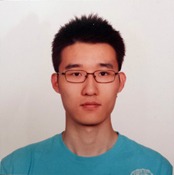Program Information
Cascaded Linear System Model for Columnar CsI Flat Panel Imagers with Depth Dependent Gain and Blur
B Peng1*, A Lubinsky1 , A Teymurazyan2 , H Zheng1 , W Zhao1 , (1) Stony Brook University, Stony Brook, NY, (2) Lakehead University, Thunder Bay, Ontario
Presentations
SU-E-I-11 Sunday 3:00PM - 6:00PM Room: Exhibit HallPurpose: To implement a depth dependent gain and blur cascaded linear system model (CLSM) for optimizing columnar structured CsI indirect conversion flat panel imager (FPI) for advanced imaging applications.
Methods: For experimental validation, depth dependent escape efficiency, e(z), was extracted from PHS measurement of different CsI scintillators (thickness, substrate and light output). The inherent MTF and DQE of CsI was measured using high resolution CMOS sensor. For CLSM, e(z) and the depth dependent MTF(f,z), were estimated using Monte Carlo simulation (Geant4) of optical photon transport through columnar CsI. Previous work showed that Monte Carlo simulation for CsI was hindered by the non-ideality of its columnar structure. In the present work we allowed variation in columnar width with depth, and assumed diffusive reflective backing and columns. Monte Carlo simulation was performed using an optical point source placed at different depth of the CsI layer, from which MTF(z,f) and e(z) were computed. The resulting e(z) with excellent matching with experimental measurements were then applied to the CLSM, Monte Carlo simulation was repeated until the modeled MTF, DQE(f) also match experimental measurement.
Results: For a 150 micron FOS HL type CsI, e(z) varies between 0.56 to 0.45, and the MTF at 14 cycles/mm varies between 62.1% to 3.9%, from the front to the back of the scintillator. The overall MTF and DQE(f) at all frequencies are in excellent agreement with experimental measurements at all frequencies.
Conclusion: We have developed a CLSM for columnar CsI scintillators with depth dependent gain and MTF, which were estimated from Monte Carlo simulation with novel optical simulation settings. Preliminary results showed excellent agreement between simulation results and experimental measurements. Future work is aimed at extending this approach to optimize CsI screen optic design and sensor structure for achieving higher DQE(f) in cone-beam CT, which uses high kVp.
Contact Email:


